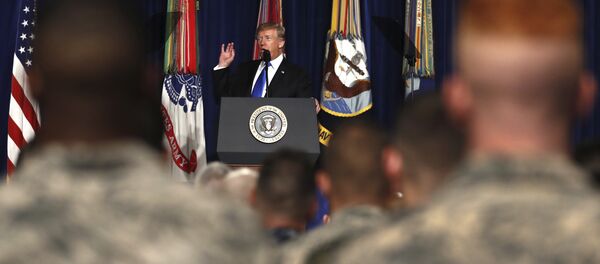The US Defense Department has been underreporting its force levels in Afghanistan, saying there are 8,400 US troops in the country when in fact some 12,000 soldiers and advisers are actually funneling in and out of the country, says Matthew Hoh, now a senior fellow at the Center for International Policy.
At least 3,500 people had been excluded from the official troop count until the day after US President Donald Trump outlined his plans for Afghanistan, the Wall Street Journal reported Tuesday. The business daily did not disclose the name of the defense official who shared the spread, but the news was corroborated by three sources cited by NBC News.
Defense Secretary James Mattis and leadership in the White House "feel that they don’t have an obligation to respond in detail or accurately to the press,” Hoh, a former US State Department official who resigned from the government in 2009 in protest over the war in Afghanistan, explained to Sputnik News Wednesday.
Mattis and other US defense officials perceive themselves “as guardians of the republic or the empire,” Hoh noted. These guardians of empire don’t see that responsibility extending to providing clear, relevant and correct statements to the press concerning the number of US personnel committed to counter-terrorism operations in Afghanistan, however. There’s a sense of “annoyance” among US defense leaders regarding press inquiries on the matter, the former Marine said.
Such an attitude toward the fourth estate “is an aspect of their arrogance and of their own self-perceived station of their roles in society,” Hoh observed.
The discrepancy in troop numbers is attributed to rotational overlap between different teams, officials explained, as well as troops deployed in the war-torn nation on brief stints lasting under 120 days who are not listed in official troop tallies.
“Of course” the Pentagon will counter that keeping troop numbers confidential "is a matter of operation security,” Hoh anticipates, “but that is nonsense."
The US War in Afghanistan is the longest war the country has ever been engaged in: there has been a US military presence in the Central Asian country for nearly 16 years. Armed conflicts in Iraq and Afghanistan have also been “the most expensive wars in US history,” according to Linda Bilmes of the Harvard Kennedy School of Government, who estimated in 2013 that $4 to $6 trillion in expenses had been racked up over the course of the conflicts.
The quarterly report published by the Special Inspector General for Afghanistan Reconstruction (SIGAR) on July 30, 2014, infamously revealed that “adjusted for inflation, US appropriations for the reconstruction of Afghanistan exceed the funds committed to the Marshall Plan, the US aid program that delivered billions of dollars between 1948 and 1952 to help 16 European countries recover in the aftermath of World War II.” It’s worth noting that the $103 billion spent on the Marshall Plan was a higher percentage of US GDP in the late 1940s and early 1950s than the $109 billion spent on Afghan reconstruction between 2002 and 2014.




